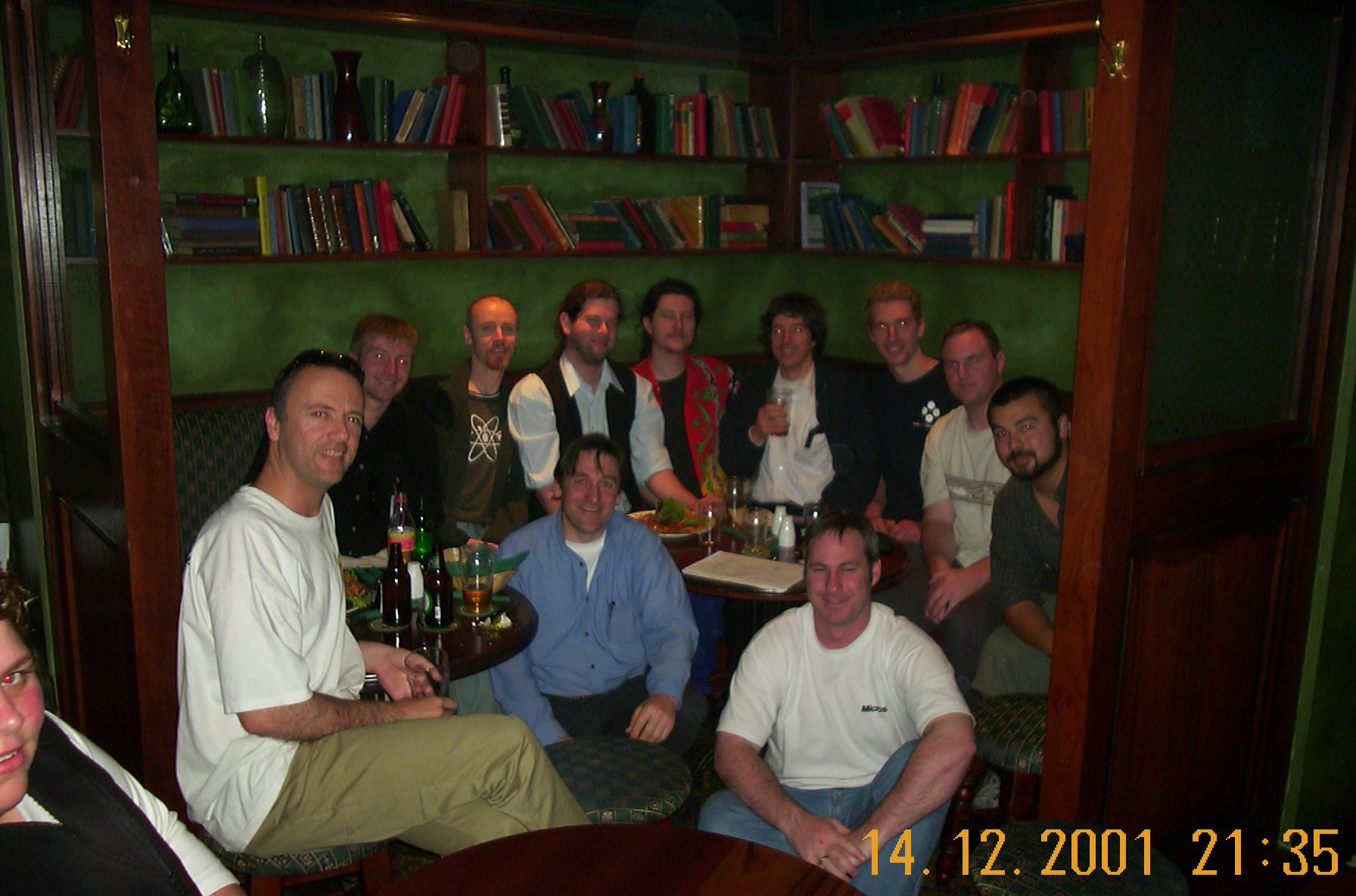Why I founded Melbourne Wireless
One person can change the world. One small action can change the course of humanity. We hear these sayings all the time, but we never truly believe them. Then one day, an idea hits. Passion grows. This is the story of how I believe I helped change my section of the world for the better.
First, we need to go back in time to around 1999. The China News Service announced new restrictions on their citizens regarding Internet cafes. The Melissa worm causes chaos on the Internet. Napster starts the Internet music revolution. Telstra is the Australian Internet.
For those not in Australia, Telstra is the leading (only?) real telco with complete ownership of all last-mile copper services to ~99% of the population. Telstra resold ADSL using L2TP in 3 speed configurations - 256/64, 512/128, or 1500/256. Telstra kept the market fairly closed. Broadband prices were high, plans were severely limited in data allowance, and broadband was not really affordable. I believe I was lucky to get 10Gb of data usage for $99.95 per month.
After moving in with Glen Brunning, we wanted to get a data link between our house and his girlfriends house around 2km away. We researched the options. 33.6Kbps modems were too slow, ADSL was way too expensive, ISDN was too expensive. Then we hit a few different technologies that might work. SHDSL was an option using 2 x SHDSL modems and a dry copper pair. As Telstra own the last mile, rumour had it that they were still selling dry pairs under the pretence of them being used as alarm circuits. Some more investigation showed that there was no way we would be able to get a dry pair from Telstra due to the fact that they didn’t want to sell them.
After yet more research, we found this thing called a WaveLAN ISA network card. This card was a full length ISA card that had a 2.4Ghz antenna connection on the back. There was rumours about people around the world hacking these devices, adding external antennas, long runs of coax cable, and getting successful 1-2Mbit data links over multiple kilometers.
A few months after this, a wonderful standard called 802.11b was announced. We quickly snapped up a few Compaq WL200 PCI cards (for only $400 each!) and started tinkering. Testing nights for these soon became wild and random. There were many nights of setting up parabolic dish antennas on deserted roads and having antennas + PC + CRT monitor + UPS operating on a car trailer (and someone on a seat in the trailer) and driving away from the stationary antenna until we lost signal. Some early testing achieved around 1km, later on after much experimentation, 2-3km were possible.
At this time, a lot of our tests were gathering much interest - so the results and setup were put together on a web page. For a few months, nothing - then out of nowhere, a flood of people started comparing tests, adding suggestions, and the ball started rolling. It seemed we were not the only ones that wanted to get telco-free data connectivity!
Fast forward to December 2001 and it was decided to hold the first meeting of what would grow into Melbourne Wireless. People came from all over Melbourne to attend. Here’s a lovely photo from the gathering.
At this meeting, I voiced my idea. How could we create a Melbourne wide data network completely independent of any Telco or service provider and offer it as open access to anyone - complete wireless freedom. On the 14th June 2002, with the help of many people, Melbourne Wireless held it’s first official meeting and voted to become an Incorporated Association under the Model Rules for Incorporated Associations. The first AGM was held on the 8th November 2002. The goals of Melbourne Wireless were simple, but challenging - To create and facilitate a member built and operated wireless network for free public access.
This may sound simple, however under the current legislation at the time, every member of Melbourne Wireless would require a carrier license! This included $10,000+ yearly payments and enough paperwork to bury a small association. Something needed to be done about this. Thankfully, the Australian Government held an inquiry into the state of broadband in Australia. A submission was prepared by Melbourne Wireless, and we sat before the inquiry committee and gave our viewpoints on the matter, the related legislation, and what we would like to see happen.
During this hearing, the committee were excellent. We were asked a number of questions regarding operational and practical guidelines, benefits to the Australian Citizens, and more technical questions regarding wireless technology in general. Our answers were well received and understood. It was very interesting to note that other speakers from major corporations (Motorola, etc) were seemingly wanting to make 802.11 technology license only. It was very refreshing to see the viewpoint of the committee changed by our presentations to completely reject this idea.
So where did this lead us? These days, no carrier license is required for non-commercial operations in the wireless 802.11 bands. People are free to set up external links spanning many kilometres with no risk of legal penalties, and major legal grey areas have been clarified.
While the original goal of a Melbourne wide free data network may still be many years off, I still believe that myself, and indeed Melbourne Wireless has played it’s part in changing the world for the better. I’m very proud of this achievement, and I can only hope it inspires others to help make the world a better place.
